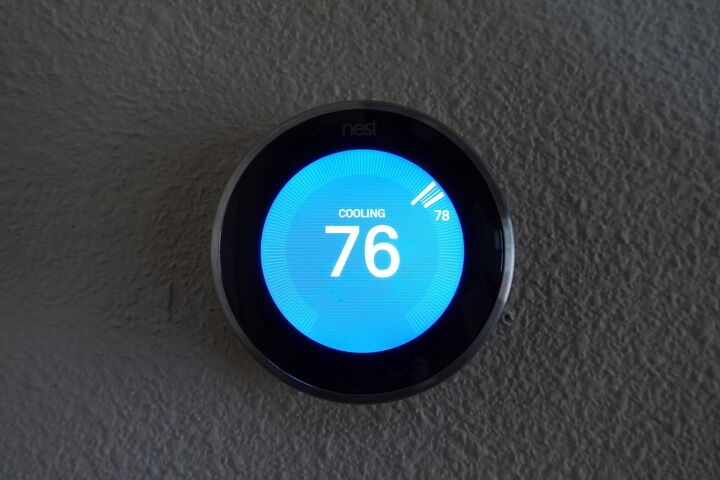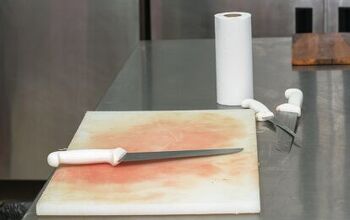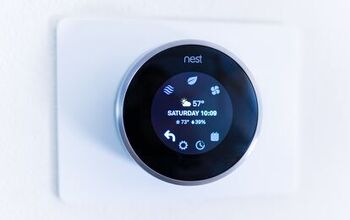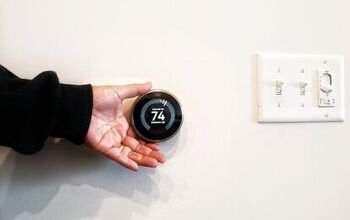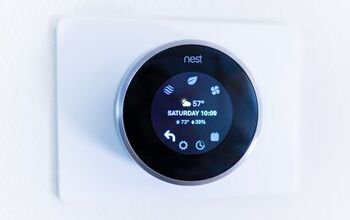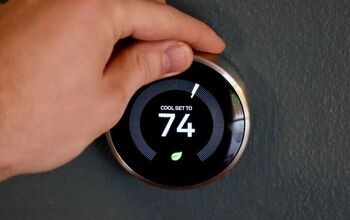Nest Thermostat Not Cooling? (Possible Causes & Fixes)

Nest is one of the most trusted smart thermostat brands in the world, and it’s a reliable one at that. That’s why people tend to freak out when they notice their Nest thermostat not cooling. Could it be a busted Nest or something worse? Oh, it all depends on what your diagnostic reveals.
A blown fuse, mislabeled wires, or even a tripped circuit breaker could make your Nest thermostat unable to cool down. Make sure that your thermostat is actually the problem before you assume that you need to replace it, since bad air filters can also reduce your HVAC cooling abilities.
If you just recently installed a Nest in your home, it can be baffling trying to figure out why it’s not doing its job. This is what you need to be aware of if your thermostat isn’t cooling the way it should.
Do You Need Your Thermostat Repaired or Reprogrammed?
Get free, zero-commitment quotes from pro contractors near you.

Before You Begin: Are You Sure It’s Your Thermostat?
There are a lot of reasons why your HVAC system cannot cool down your house. Your thermostat is just one bit of the issue. So, prior to assuming it’s thermostat-related, you are going to need to make sure it’s not one of the following:
- A Clogged Air Filter. Too much gunk in your HVAC air filters will harm your air flow, which in turn, may reduce the cooling ability of your system. Replace those air filters before you assume something is up.
- A Bad AC Unit. There are a lot of reasons why your AC unit might not be working well. It could be a blown motor or something more serious. Either way, check your AC unit, too.
- A Blown Blower Motor/Fan. Though this usually plays more of a role with your furnace, many HVAC systems will also have fans moving air around. A blown fan can easily make your home feel toasty even when your AC is on blast.
- Frayed Electrical Wires. If you have bad wiring leading to your thermostat, then it doesn’t matter what thermostat you install. It just won’t work.
If you have any reason to believe it’s the HVAC system, then call an HVAC tech or read up on other reasons why you could be having this issue. Now that I’ve said it, let’s look at the Nest thermostat.
Why Is My Nest Thermostat Not Cooling My Home?
Nest thermostats are great, but they are not perfect. They can still have issues. So, let’s talk about the most common reasons why you might have an issue.
Bad Wiring Labels
One thing that frequently happens with Nest installation can be attributed to a case of mistaken identity. More specifically, you might have mislabeled some of the wires that were supposed to go into your thermostat. You will need to label your wires appropriately, and that means you may need to check out the Nest compatibility checker.
Not all HVAC setups are going to be compatible. If yours isn’t, you may need to return your Nest. (Sorry!)
The Need To Rewire It
Funny thing about having the wrong labels on your wires. The label switching alone won’t fix the problem. If you mislabeled your wiring or accidentally connected the wrong wires together, then you may have to rewire your Nest thermostat.
You have to make sure that your wires are connected to the right parts of your thermostat. Before you rewire your thermostat, make sure you shut all power to the thermostat off. After all, this is one of those things that can easily cause a shock if done improperly.
A Tripped Breaker
It’s important to know that a Nest thermostat can potentially put too much stress on your electrical circuit. This is especially true if your breaker is already strained from usage from other items, like a refrigerator or a favorite appliance that eats up energy.
This is pretty easy to diagnose. All you need to do is go to your circuit breaker and check the circuits (or fuses, if you have a fusebox). If it’s tripped, untrip it. It should work well.
A Blown Fuse
While I could make another section about fuse boxes instead of circuit breakers, they’re one and the same in most situations. However, that’s not the only fuse you have to worry about in your HVAC system. Your Nest thermostat also has a fuse. And, like other types of fuses, your thermostat fuse can blow.
To check if a blown fuse is your issue, you’re going to have to open up your Nest thermostat and check out the fuse. If it looks foggy or burned, then it blew out. You are going to have to replace the fuse with a new one. Unfortunately, that means you have to order one directly from Nest or an approved Nest distributor.
When Should You Call An HVAC Tech?
Though Nest is meant to be a pretty easy to DIY tool, the truth is that it’s still a major component of an HVAC system. This means that you might still want to call a tech once in a blue moon. If any of the following are true, it’s time to look up a tech near you:
- You can’t figure out what’s wrong. If you are not good at troubleshooting your system or aren’t sure which wires need to be labeled, then a call to your technician is a smart idea. I mean, they will be able to do it without issue.
- There are indications that it could be bad wiring or something related to your HVAC system. Let’s say that you are totally convinced that you don’t have a bad thermostat. You just got it and it’s actually compatible for your system. That means it may be something related to your AC unit. At this point, a tech can help diagnose the issue.
- You are scared to open up the Nest thermostat and replace the fuse. Is this necessarily a reasonable fear? Kind of, but not really. Even so, you always can have a handyman replace the fuse if you are nervous about handling it.
- Your breaker keeps tripping or you keep blowing fuses. As the robot in Lost in Space would say, “Danger, Will Robinson!” A breaker that keeps tripping is a serious warning sign you should never ignore. This can indicate bad electrical wiring. That, in turn, suggests that you have a potential fire hazard on your hands. If you notice this sign, call an electrician immediately.
- There are other symptoms affecting your HVAC system that are worrying you. HVAC systems are complex and it’s rarely ever just one issue. If you find that your entire HVAC system is starting to act out, it’s time to call someone.
Should You Call Nest?
Honestly, this is one of those moments where it really wouldn’t hurt to call the company that made the thermostat. Nest is amazing when it comes to matters of repairing a thermostat. If your Nest came with a warranty, then you might be able to snag a new Nest…or at the very least, get someone to repair yours.
Nest is pretty good about customer care, and if you’re worried about having to potentially bring your thermostat for a refund, then this is a good time to call them. It never hurts to ask what they can do. Besides, it can save you money.
Do You Need Your Thermostat Repaired or Reprogrammed?
Get free, zero-commitment quotes from pro contractors near you.

Related Questions
Why does my Nest thermostat say “in 2+ hours to cool?”
This means that your Nest thermostat is running on a bit of a delay. This often has a reason behind it. Poor installation, a recent reboot, or even a problem with your HVAC system can all make this happen. It also can be an incomplete circuit, especially if you recently rewired your home.Most of the time, this can resolve itself in time. If it persists, you may want to call the Nest customer service line to find out what you can do to fix it.
How can you tell if your HVAC system is Nest-compatible?
It’s actually fairly easy to figure this out. To determine if you can have a Nest, look for a C-wire in the electrical outlet setup where you want to install your thermostat. If you do not have a C-wire as a part of your thermostat setup, you cannot have a Nest.The C-wire is a wire that sticks out of the terminal that is labeled “C.” It should be visible when you look behind your thermostat, though you might have to do a little poking around to spot it.
What color is a C-wire supposed to be?
The most common color given to a C-wire is blue, and it’s actually standardized in most modern setups. If you have an older setup where you may have gotten a C-wire before it was standard, you may need to take a closer look. Very early thermostat wire setups may have different colors.It’s important to remember that C-wires are not always a part of a thermostat’s setup. They’re often referred to as the “third wire.” If your wiring only has two wires, you don’t have a C-wire.

Ossiana Tepfenhart is an expert writer, focusing on interior design and general home tips. Writing is her life, and it's what she does best. Her interests include art and real estate investments.
More by Ossiana Tepfenhart



